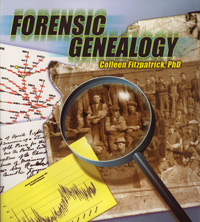 Usually when someone is said to be wearing the proverbial rose-colored glasses they are said to be viewing the world, or a given situations, as better than it really is. The idiom suggests not positive thinking but rather a choice to ignore the hardships of reality. However, I used to teach a class on Internet research in which I took the rose-colored glasses concept and flipped it over. The idea being, sometimes doing research should take pause, look at what seems obvious in a new light, put on the rose-colored glasses and gain a new perspective. Sometimes a different perspective, a new way of looking at information, is just what the researcher needs to take the next step. Analyzing resources in a new way, with deeper understanding, may lead to new areas of research or greater success.
Usually when someone is said to be wearing the proverbial rose-colored glasses they are said to be viewing the world, or a given situations, as better than it really is. The idiom suggests not positive thinking but rather a choice to ignore the hardships of reality. However, I used to teach a class on Internet research in which I took the rose-colored glasses concept and flipped it over. The idea being, sometimes doing research should take pause, look at what seems obvious in a new light, put on the rose-colored glasses and gain a new perspective. Sometimes a different perspective, a new way of looking at information, is just what the researcher needs to take the next step. Analyzing resources in a new way, with deeper understanding, may lead to new areas of research or greater success.
Looking at information in a new way is the purpose behind Colleen Fitzpatrick’s book, Forensic Genealogy. Dr. Fitzpatrick helps the researcher dig deeper, examining sources with greater scrutiny. She hopes that through the book the reader will find:
- “Unconventional discoveries from surprising sources
- An understanding of how your ancestors lived
- Fascinating insights into your family history”
An investigative journalist once taught me the value of reevaluating your resources, looking for what fits or doesn’t fit, to put on the rose-colored glasses, and to follow the paper trail. He told me the best genealogist learn to think like investigators. Forensic Genealogy is your investigator’s handbook. This guide goes deep into forensic analysis often missed in other books. For example, most books discuss dating a photograph by the material it is on, the clothing being worn, and hairdos. Fitzpatrick warns of problems with such analysis. Hairdos didn’t always proclaim a specific time period. Clothing, especially for children, was often handed down. Older relatives may suffer from memory lapses, providing incorrect information about photographs. The author points out often pictures can be evaluated to determine the type of camera used and that the placement of logos on the back can suggest time periods. These and other observations, when understood, can lend strength to or improve upon evaluations of photographs or any other information source.
If the example seems to obvious, consider some of the other sources the author has used; including, “five hundred year old weather patterns, information on the breeding cycle of mosquitoes, old almanacs, how babies were delivered in the middle ages, old hospital admission records, the 1909 National Cash Register catalog, the history of the railroad in Canada, the backs of photographic prints form the 1950s, the history of the Spanish Armada,” and more. Forensic Genealogy will definitely help the researcher dig deeper and rethink how to look at sources.
Table of Contents
Introduction
The Digital Detective
- Getting Started
- Location, Location, Location
- When?
- Stumpers
Case Study in Digital Detective Work — Where, Who, When, and Why
The Database Detective
- Introduction
- Getting Started
- Periodical Databases–Using City Directories
- Event Databases
- Unusual Reference Materials
- Using Multiple Sources to Construct a Family Story
- Cultural Profiling
Case Study in Database Detective Work — The History of the Ulmer Family
The DNA Detective
- About DNA
- Types of DNA Markers and Mutations
- Why Surname Studies Use Certain Markers
- Genealogical DNA Studies
- Connecting with History Through Single Name Studies
- Non-paternity Events
- Genetic Genealogy Testing Companies and Testing Options
- Online Databases
- The Details of DNA Markers and Their Genealogical Uses
- The Most Recent Common Ancestor (MRCA)
- Cladograms and Pairwise Mismatches
- There Will Always Be Mysteries Left
Order a copy of Forensic Genealogy from Family Roots Publishing; Item #: YA006.